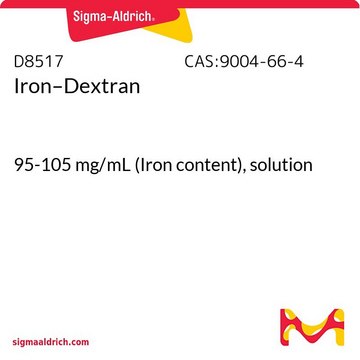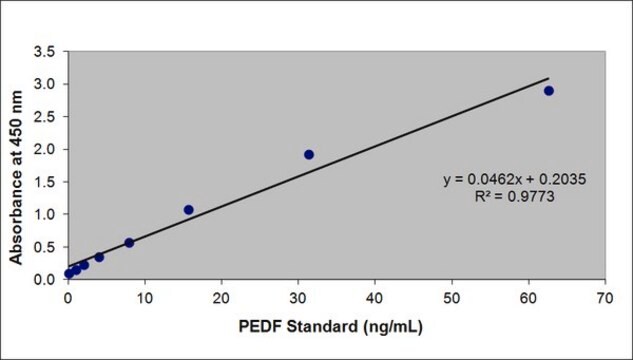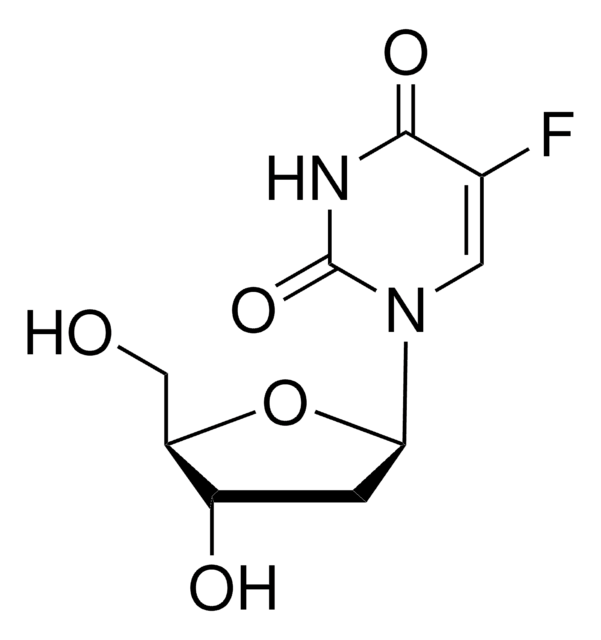SRP4988
PEDF human
recombinant, expressed in E. coli, ≥95% (SDS-PAGE), ≥95% (HPLC)
Synonyme(s) :
EPC-1, EPC1, PIG35, Pigment epithelium-derived factor, Serpin-F1, SerpinF1
About This Item
Produits recommandés
Source biologique
human
Produit recombinant
expressed in E. coli
Essai
≥95% (HPLC)
≥95% (SDS-PAGE)
Forme
lyophilized
Poids mol.
~44.5 kDa
Conditionnement
pkg of 20 μg
Technique(s)
cell culture | hybridoma: suitable
western blot: suitable
Impuretés
endotoxin, tested
Adéquation
suitable for Western blot
Numéro d'accès NCBI
Conditions d'expédition
wet ice
Température de stockage
−20°C
Informations sur le gène
human ... PEDF(5176)
Description générale
Pigment epithelium-derived factor (PEDF) is a multifunctional glycoprotein that belongs to the serine proteinase inhibitor (serpin) family. This protein is widely expressed across various tissues and organs in mammals and is characterized by a reactive center loop (RCL), a common structural feature of serpins. PEDF plays a crucial role in maintaining numerous physiological functions. SERPINF1 mRNA, which encodes PEDF, exhibits high expression levels in both human fetal and adult livers, as well as in adult human bone marrow.
Application
Actions biochimiques/physiologiques
Forme physique
Reconstitution
Code de la classe de stockage
11 - Combustible Solids
Classe de danger pour l'eau (WGK)
WGK 3
Point d'éclair (°F)
Not applicable
Point d'éclair (°C)
Not applicable
Faites votre choix parmi les versions les plus récentes :
Certificats d'analyse (COA)
Vous ne trouvez pas la bonne version ?
Si vous avez besoin d'une version particulière, vous pouvez rechercher un certificat spécifique par le numéro de lot.
Déjà en possession de ce produit ?
Retrouvez la documentation relative aux produits que vous avez récemment achetés dans la Bibliothèque de documents.
Notre équipe de scientifiques dispose d'une expérience dans tous les secteurs de la recherche, notamment en sciences de la vie, science des matériaux, synthèse chimique, chromatographie, analyse et dans de nombreux autres domaines..
Contacter notre Service technique








